Find examples of contemporary caricature and identify the elements of the drawing that help with the character recognition and where the caricature takes place. From the information contained in the drawing, how do you know who this person is? How has the illustrator exaggerated or embellished this visual information to provide caricature? What are the connotations of their exaggerations?
I was asked to draw a caricature in Level 1 for the Graphic Fiction unit and as part of the preparation I created a Pinterest board, as well as researching illustrators who work in this field. For this Research Point, I looked again at some of these, along with a few new ones and I have selected four to discuss.
Ricardo Martinez
Since discovering scratchboard in Part 3, and it subsequently becoming one of my favourite art media, I was naturally blown away by the skill level in Ricardo Martinez‘s work. Although the illustration of Mick Jagger, below, is rather grotesque, it is stunning in its craftsmanship and how Martinez has managed to create such a recognisable portrait of Jagger. The fact that this has been created using scratchboard just makes it even more impressive to me. I love the textures he has used to give form to the face so it does not look flat, even using very thin, light scratches to define the back of Jagger’s throat.
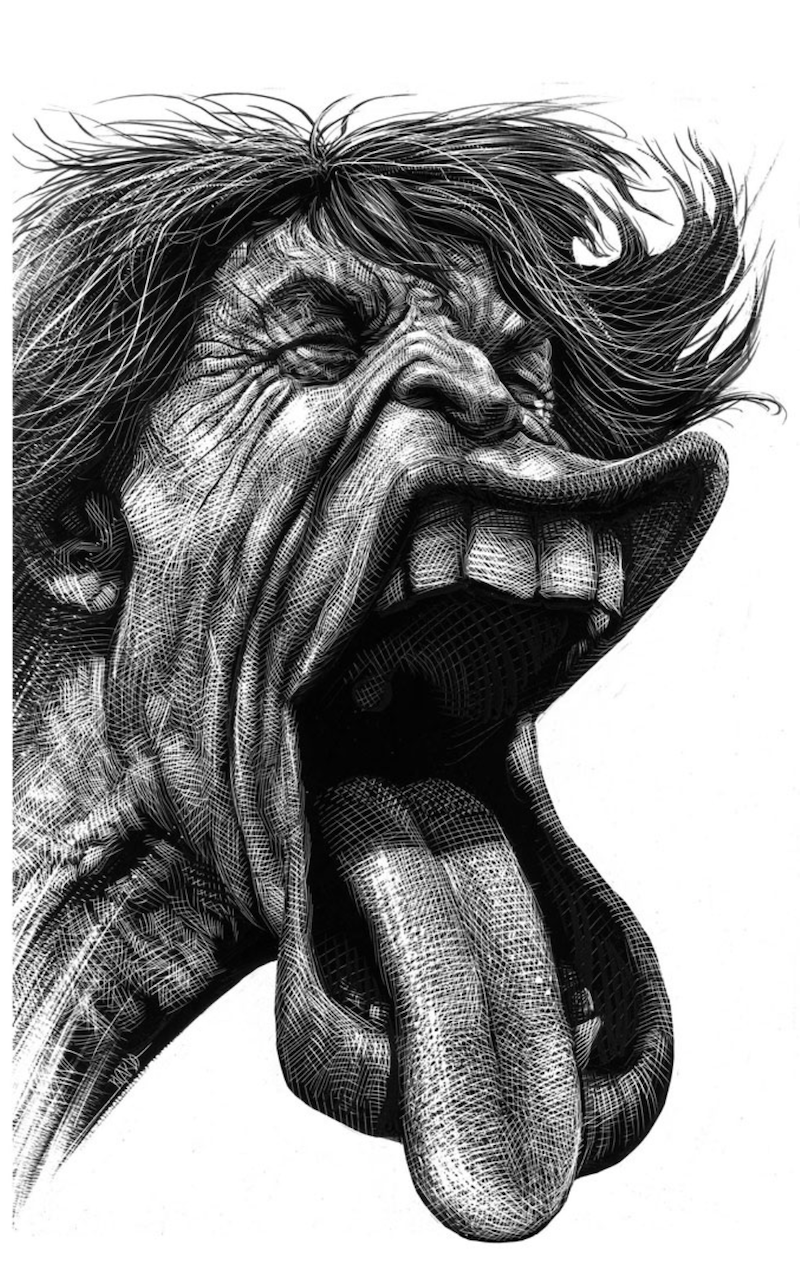
From the information contained in the drawing, how do you know who this person is?
The top half of Mick Jagger’s head is a relatively true to life, it is only the lower half (the mouth, lips, teeth and tongue) that have really been exaggerated. Martinez has also made sure that Jagger is pulling a recognisable pose and has his attitude on display.
How has the illustrator exaggerated or embellished this visual information to provide caricature?
Mick Jagger is famous for having large, thick lips and a rather big mouth, so Martinez has exaggerated these features.
What are the connotations of their exaggerations?
Although it is not the most flattering portrayal of Jagger, I do not consider this depiction of Mick Jagger to be particularly negative in its connotations. I think it just boosts his reputation for being loud, confident and having a unique face. It made me imagine Jagger strutting about on stage making a great deal of noise.
Derren Brown
Although most well-known as an illusionist, Derren Brown is also an artist, focusing on portrait and caricatures. I like the style of his paintings as although very realistic, they are still identifiable as paintings and do not just look like photos. I have selected three examples of his ‘celebrity’ portraits as I would like to discuss the different approaches Brown has taken in portraying each.
Willem Dafoe
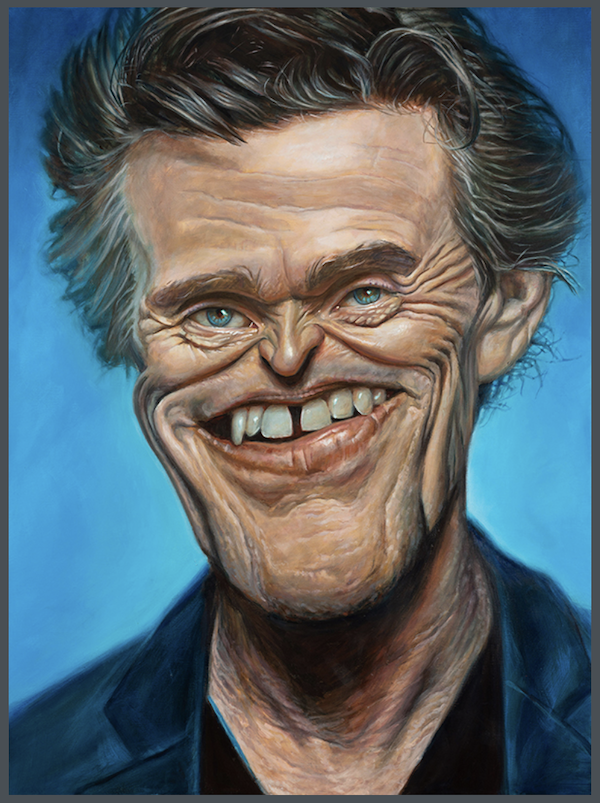
From the information contained in the drawing, how do you know who this person is?
As with Martinez’s Jagger illustrations, Brown has kept the top half of Dafoe’s head fairly true to life, although much wider than in reality.
How has the illustrator exaggerated or embellished this visual information to provide caricature?
Dafoe has quite a distinctive mouth area, so Brown has exaggerated this. This has resulted in his teeth also being enlarged and looking slightly goofy. Brown has also condensed the facial features into the centre of the face. It looks like Dafoe is viewing himself in a distorted mirror – like those in a ‘House of Horrors’.
What are the connotations of their exaggerations?
I do not feel this representation of Willem Dafoe is particularly insulting. I did notice that if you cover each side of the face, the visible side does look slightly more menacing, which reflects the range Dafoe is able to play on screen – a villain or good guy. I believe this illustration suggests Brown feels respect and warmth to Dafoe.
Donald Trump
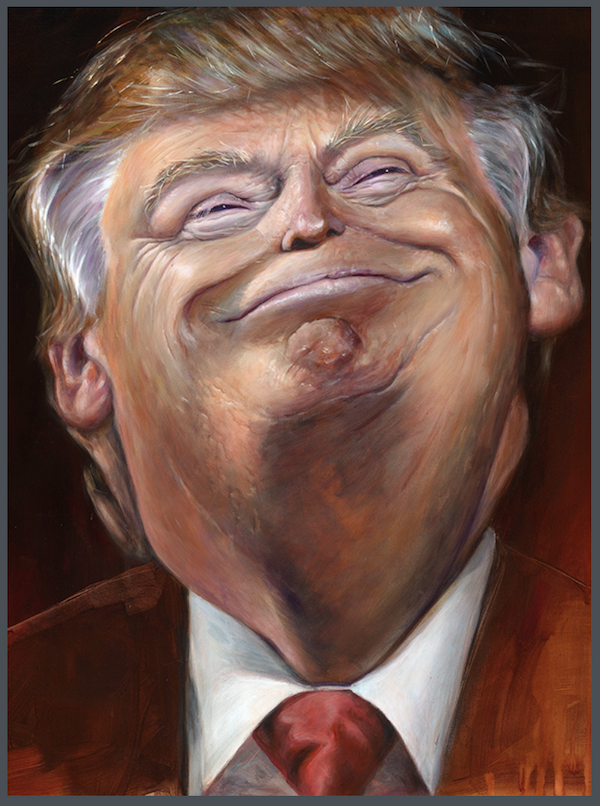
From the information contained in the drawing, how do you know who this person is?
If anything, Donald Trump is certainly unique. Brown has more or less kept Trump’s facial features true to life, these have just been squashed slightly and condensed on his flattened head. Trump is also pulling a recognisable pose. The clothing that are visible in the illustration are also well-established Trump attire.
How has the illustrator exaggerated or embellished this visual information to provide caricature?
Brown has exaggerated Trump’s neck to emphasis the expression on his face – the main focal point is Trump’s mouth, with its smug smile, which his almost closed eyes help to intensify. Again, as with the Dafoe image, it looks like a distorted mirror.
What are the connotations of their exaggerations?
Trump looks like the ‘cat that got the cream’ and he knows it. It gives the impression of self-satisfaction and arrogance. Another connotation I picked up from this illustration was the use of red, fiery colours (including the tie) at the bottom of the composition, which suggests danger/warning and, as a religious connotation, perhaps hell.
When compared the Dafoe caricature (which I noticed has a blue, calm background), I would assume that Brown is not particularly a fan of Donald Trump as it is not a very complimentary representation.
Dame Maggie Smith
I included the illustration below of Dame Maggie Smith as it shows another kind of character portrait by Brown. Although it the image is very life-like and not exaggerated, it retains a painterly quality to it and not hyperrealism. Smith is looking directly at the viewer creating an intimate sense of connection, and the connotations I felt included that she is a warm and wise individual. Brown has used warm, rich colours and emphasised Smith’s wrinkles, but not in a demeaning way. I also think that the expression enhances Smith’s reputation as being quite mischievous.
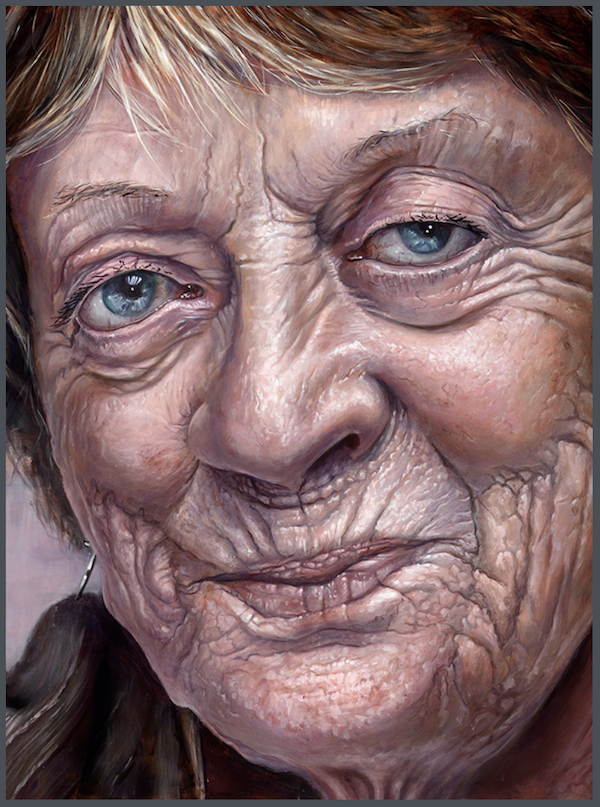
Court Jones
Court Jones is one of the illustrators I looked at in the Graphic Fiction unit. I selected a caricature of Donald Trump.
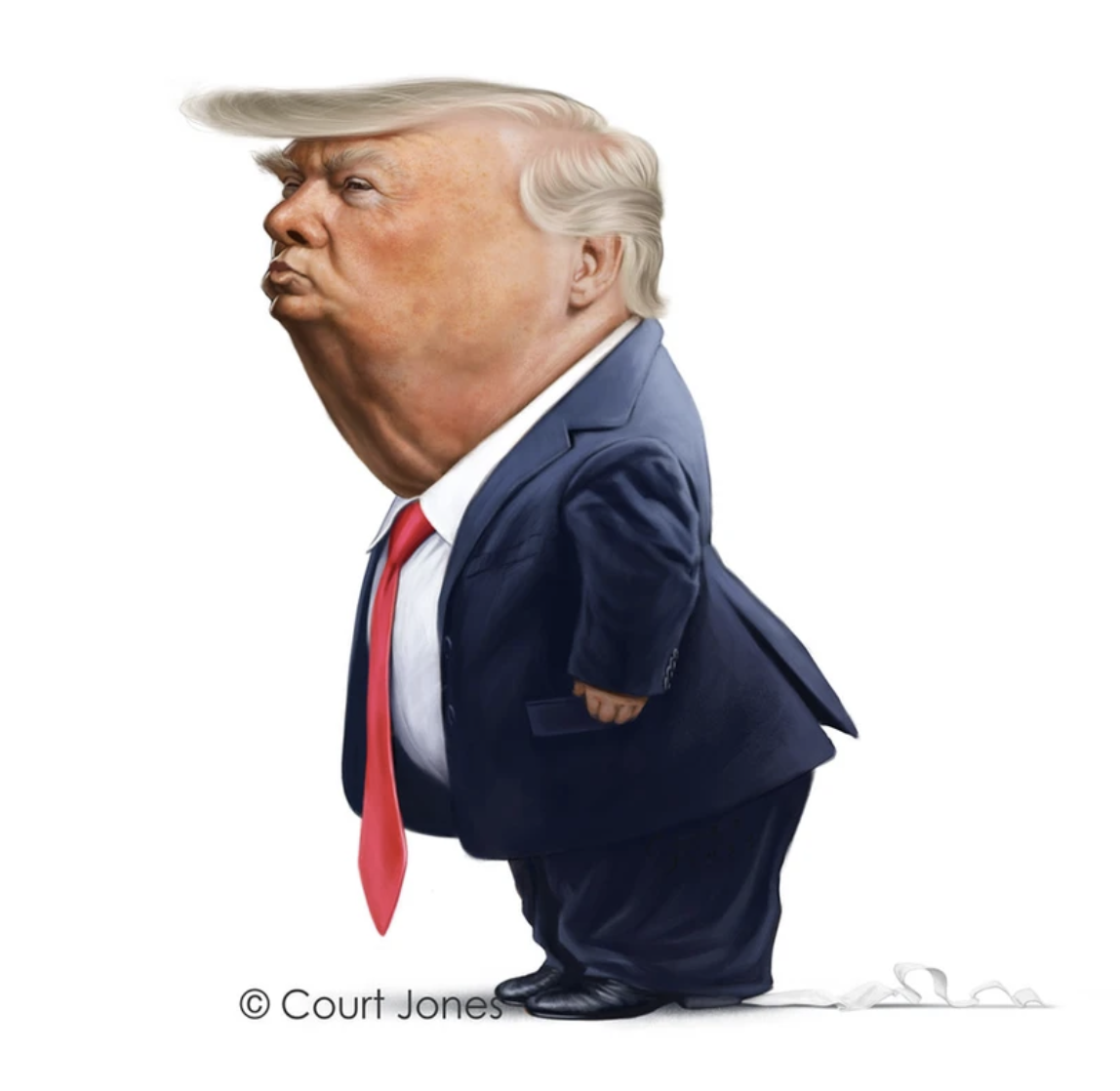
From the information contained in the drawing, how do you know who this person is?
As with Brown’s version of Trump, Jones has kept the facial features of Trump fairly realistic, just slightly exaggerating them. In fact, every element of the depiction, including Trump’s posture, hair style, clothing, body shape and expression, are all true to life, just being exaggerated either slightly or more noticeably.
How has the illustrator exaggerated or embellished this visual information to provide caricature?
As stated above, practically every feature of Trump has been altered in some way. The most notable are: the size of his head; body proportions; the extended chin; the extra long, flattened hairdo (with a bald area showing in the parting); the inflated torso; the clothing (tie too long, extra wide trouser legs); the shortened arms and tiny hands; and the exaggerated posture with his bottom sticking out and body leaning forward.
What are the connotations of their exaggerations?
The fact that he has added a line of toilet paper attached to Trump’s shoe is a clear indication of Jones’s feelings towards him! The connotations I read from the exaggerations gave the impression of an incompetent, big-headed, stupid, ‘child-like’ individual.
Stephen Kroninger
Another illustrator I found in Level 1 unit was Stephen Kroninger. I am not generally a fan of collage art, but I was so impressed with how Kroninger is able to produce such recognisable caricatures using a minimal amount of material.
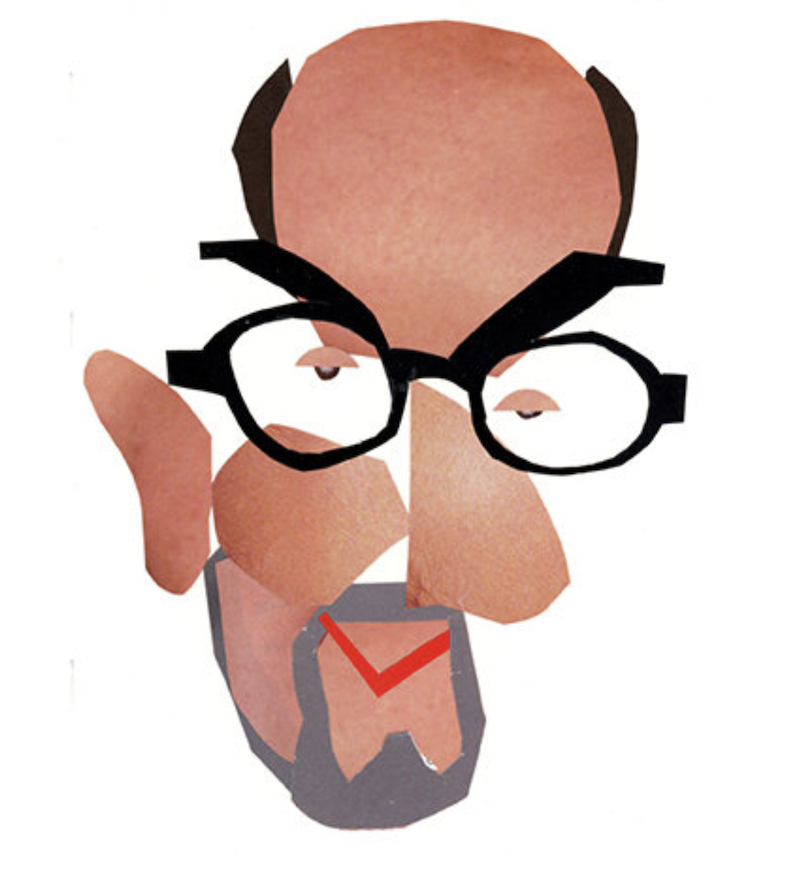
From the information contained in the drawing, how do you know who this person is?
Kroninger has selected the key features of Rushdie’s face and included these, making the expression and demeanour recognisable. Whole areas of the face are missing, but it is possible to mentally fill these in as Kroninger has included just enough visual information.
How has the illustrator exaggerated or embellished this visual information to provide caricature?
Kroninger has reduced all the features to simplified shapes that appear to have been roughly cut out and placed rather haphazardly (although I do realise this is not the case). He has identified all the little nuances and key information that makes the face distinctive and exaggerated these. It reminds me slightly of Cubism.
What are the connotations of their exaggerations?
Compared to the other examples, I found this on to be quite a neutral caricature. It is definitely not negative in its depiction, but it feels like a simplified representation of Rushdie, rather than suggesting the viewer should feel any particular emotion towards it, or that the artist does either.
Bibliography
Brown, D. (2023) Artworks – Derren Brown. Available at: https://derrenbrown.co.uk/art-store/ (Accessed 28 August 2023).
Jones, C. (n.d.) Caricature – Court Jones Illustration. Available at: https://www.courtjones.com/illustration-caricature (Accessed 28 August 2023).
Kroninger, S. (n.d.) Stephen Kroninger. Available at: https://www.stephenkroninger.net/stephenkroninger-caricature (Accessed 28 August 2023).
Martinez, R. (n.d.) Portrait – Ricardo Martinez Art. Available at: https://cargocollective.com/ricardomartinez/Portrait (Accessed 28 August 2023).